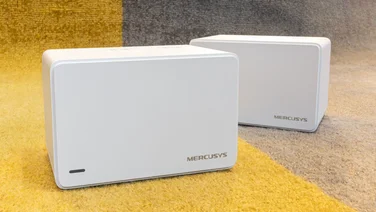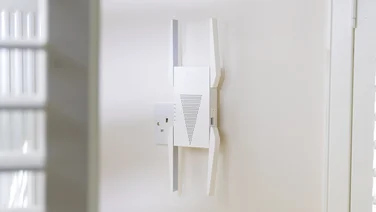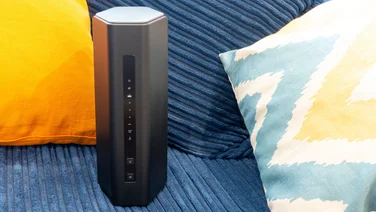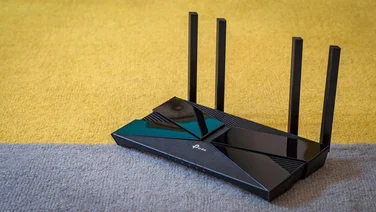To help us provide you with free impartial advice, we may earn a commission if you buy through links on our site. Learn more

The ZyXEL Armor Z1 is a particularly large router, even considering 802.11ac-rated routers’ tendency to be on the large side. It’s a surprisingly attractive router, too, thanks to the yellow accents and vents across its front and carbon fibre-like detailing across its top.
The Armor Z1 has four Gigabit Ethernet ports and a Gigabit WAN for connecting a modem or router. There are also two USB3 ports tucked away behind a flap on the side of the router. Routers rarely hide away the USB ports like this and we like how the cover maintained the router’s sleek design when the ports aren’t in use. The USB ports can be used for network storage, with support for SMB, FTP and DLNA, or for setting up a print server.
Four external antennas protrude from the rear, and these allow the Armor Z1 to operate simultaneously on the 2.4GHz and 5GHz bands. Slightly annoyingly, both bands are set to broadcast under the same SSID, which makes things tricky if you wwant to choose which network to connect to. Separating the two networks is simple enough once you’re in the router admin interface.
However, one annoyance we encountered was that there’s no way to access the router admin without a functioning modem attached to the router’s WAN port. This is because it forces you to go through the ‘eaZy 123’ setup process before you can change any router settings. This is a potential annoyance for anyone looking for a router just to create a local network.
The other annoyance we encountered was that the 5GHz band was set to broadcast on a channel not covered by the European 802.11 standard, meaning our laptop and USB adaptor were initially unable to detect the 5GHz network. In order to change to a supported channel you need to first access the Expert section of the router’s interface, but this is hidden away behind a tiny link that is very easily missed.

Once you’ve reached the Expert section you’ll find all the usual network administration settings, such as parental control and QoS, and there’s a useful overview of the router’s CPU and RAM usage to help you monitor its performance. The Live Network Monitor screen lets you track bandwidth across the devices on the network, too. You can also set up a couple of guest networks if you want to give visitors internet access without letting them near the rest of your network.
Wireless speeds were a little disappointing for a router that costs as much as the Armor Z1. With our test laptop’s integrated 802.11n adaptor we only saw 25.4Mbit/s and 10Mbit/s on the 2.4GHz network at 10m and 25m respectively; speeds which are only average. Performance was better on the 5GHz band, with speeds of 181.8Mbit/s at 10m and 149.1Mbit/s at 25m. The 25m score in particular is one of the best we’ve seen.
Zyxel didn’t send us a USB adaptor for testing, so we used our reference Trendnet TEW-805UB 802.11ac USB adaptor to test 802.11ac speeds. With this adaptor we saw 256.3Mbit/s at 10m and 233Mbit/s at 25m; strong speeds, but not enough to justify the router’s high price.
The ZyXEL Armor Z1 is a good-looking router with strong performance, but it’s very expensive. The D-Link DIR-890L offers similar 802.11ac performance for less cash.






